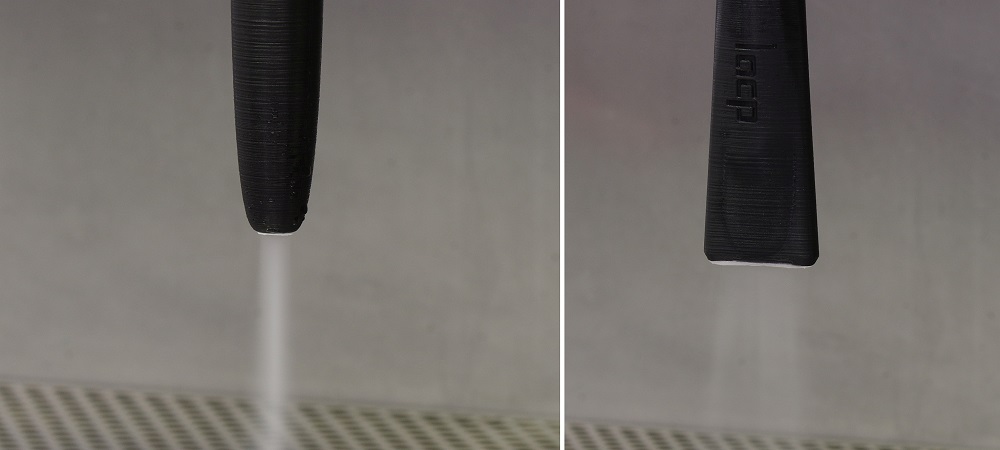For in-line dry component cleaning applications, ACP systems is releasing itsPowerSnow QuattroClean technology. The process compresses recycled liquid CO2 into cleaning granules using an integral unit. Compressed air then accelerates the granules, fed through a purpose-designed nozzle, for blasting on to surface that requires cleaning. Thanks to the elimination of the customary external pellet production and logistical effort associated with conventional dry ice cleaning, it is possible to realise a fully-automated and uninterrupted cleaning or deburring process.
The new cleaning process efficiently removes stubborn particulate and filmic contamination from virtually all materials and material combinations. Using cleaning granules made from recycled liquid CO2, the process can clean entire surfaces or selected areas in a reproducible manner. Applications range from surface finishing in body-in-white automotive processes and the removal of welding beads, to the fine deburring of medical instruments and fine-tolerance watch components.
Cylinders or tanks feed the mediato the QuattroClean PowerSnow system, thus offering unlimited shelf life.The jet of compressed air containing the granules has a temperature of around -78°C.
On impacting on the surface, four effects occur. A thermal effect leads to sudden local cooling, where the different expansion coefficients between the substrate and the contaminants cause cracks to form in the latter. A mechanical effect also takes place, where the transfer of momentum detaches impurities. When the snow granules impact on the surface, they undergo a transition from the solid to the gaseous phase, with an abrupt increase in volume of around 600 times. This so-called sublimation effect creates micro-pressure waves that also detach contaminants. In addition, during the transition phase, a solvent effect removes filmic/organic contamination.
For further information www.acp-systems.com















